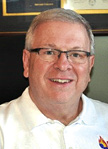Robert Tutterow
Most of you are familiar with the National Fallen Firefighters Foundation (NFFF) Life Safety Initiatives. The 16 initiatives were originally developed almost 15 years ago during the first Life Safety Summit in Tampa, Florida.

Initiative #11 states: “National standards for emergency response policies should be developed and championed.” This past May, the NFFF convened a working group in Columbus, Ohio, to start the process of identifying ways to develop a national response policy. The working group consisted of 26 subject matter experts from across the country. In the end, there was unanimous and enthusiastic support for the development of a policy.
The working group identified 17 recommendations to guide the development process. The process included a review of policies already in existence. The overarching objective of the working group was to create operational policies that minimize exposure “to hazardous conditions that can result in medical or traumatic tragedies to firefighters.”
There was total agreement that the National Fire Protection Association (NFPA) should be the agency to develop such a standardized policy. However, before awaiting the NFPA process to develop a standard, fire departments (if they have not already) should not delay in proceeding with developing their own policies that address the safety and health of their members. It is imperative that these policies be developed based on science-based research and be data driven.
There was also a strong voice advocating that an NFPA technical committee formed to develop the standard have representatives appointed from the wildland firefighting community. The most recent review of line-of-duty deaths related to response clearly shows a need for the wildland community to be involved.
The group was very cognizant of the wide range of response capabilities of fire departments across the nation. As such, they ask that a new NFPA standard be “scalable, affordable, and achievable.” It was stated in one of the recommendations that the standard be flexible enough that it could be “refined by local/regional working groups” to make implementation as effective as possible for the locale.
One of the perhaps most obvious recommendations was that policies should be based on the risk element of the nature of a call. This is an issue that has been debated for years—what justifies the use of lights and sirens vs. responding routinely without delay. This recommendation addresses speed, intersection control, and seat belt policies.
Associated with this recommendation is the number of units that respond to a call. I come from a fire department that would send four engines, two ladders, a heavy rescue, and a battalion chief to an alarm activation. These were frequent calls in the downtown high-rise area. Sadly, it was a call from a very high-level corporate executive to the mayor wanting to know why there were so many fire trucks on the street and never a fire that prompted a reduced number of units dispatched on a call. After approximately 20 years of the reduced number of units responding, there has been absolutely no decline in service delivery. In fact, it can be strongly argued that the public is now getting better service. More units are available for true emergencies, and the risk of a traffic accident to the department and the public is reduced.
In follow-up to the scenario above, one of the recommendations is that sample standard operating procedures should be developed that address a broad range of incident types. Without a doubt, one of the easiest recommendations to adopt is to immediately start using “plain talk” for emergency responses. What value do the “10 codes” add anyway? And, what value is there in using localized jargon that might be confusing at a large incident that will require multiple agencies, perhaps from outside the region? This a change that can be made immediately and at absolutely no cost.
The working group recommends that standardized training and qualifications be adopted, along with standardized health and wellness standards. There is a recommendation to have guidelines that address new and emerging technologies. Drones were used as an example.
Recommendations were made for the NFFF to develop partnerships with other organizations to help support this initiative financially and with marketing to the stakeholders. The final recommendation was to identify barriers to such a standard and come up with strategies to overcome them. The report of the working group included an appendix that identifies 15 items an agency should address in developing a response policy; there are three general topic areas within the 15—Driving/Apparatus, Operations, and Health.
What is your department’s response policy? A copy of the report can be found at https://www.everyonegoeshome.com/2018/08/15/emergency-response-policies/.
ROBERT TUTTEROW retired as safety coordinator for the Charlotte (NC) Fire Department and is a member of the Fire Apparatus & Emergency Equipment Editorial Advisory Board. His 34-year career includes 10 as a volunteer. He has been very active in the National Fire Protection Association through service on the Fire Service Section Executive Board and technical committees involved with safety, apparatus, and personal protective equipment. He is a founding member and president of the Fire Industry Education Resource Organization (F.I.E.R.O.).

